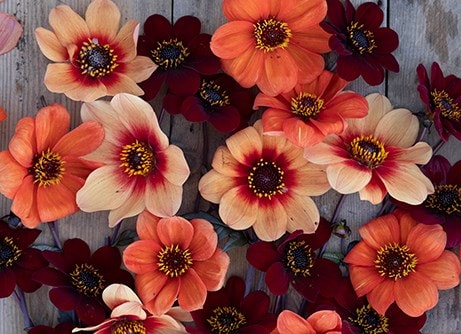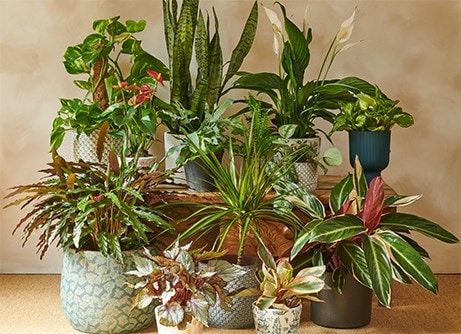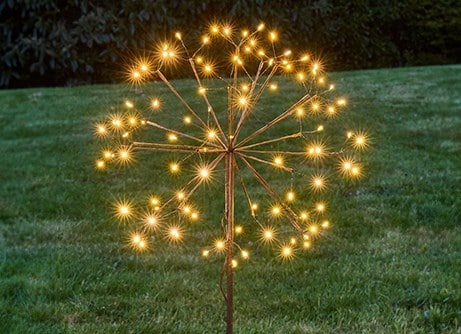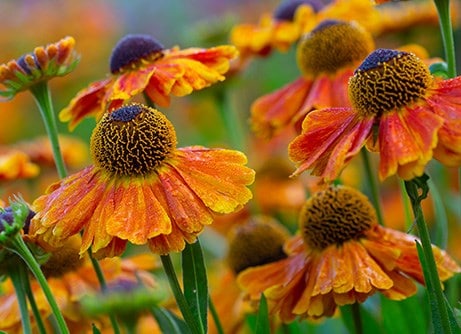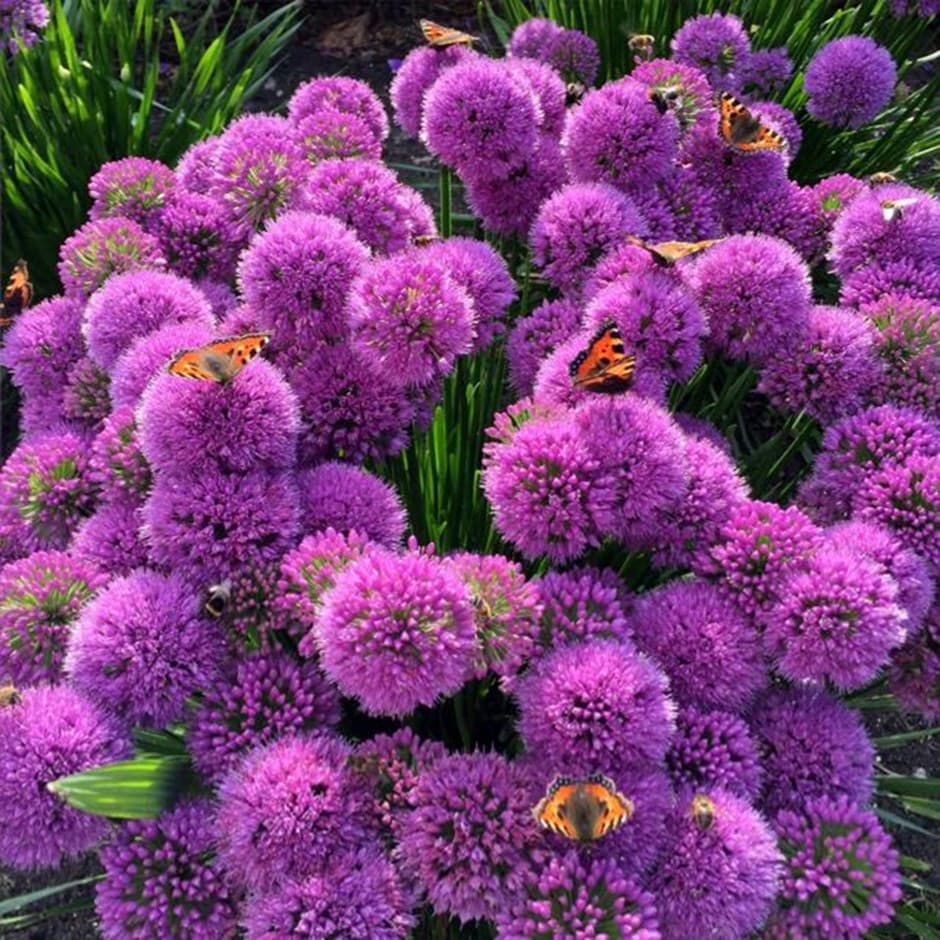
A later-flowering allium, which from mid- to late summer produces slender stems topped with a neat, rounded cluster of rose-pink star-shaped flowers.
Relatively compact in habit, Allium 'Millennium' can be used to add colour towards the front of the border, but it will also work well in pots or even windowboxes.
Relatively compact in habit, Allium 'Millennium' can be used to add colour towards the front of the border, but it will also work well in pots or even windowboxes.
How to care for Allium Millennium:
Alliums thrive in a sunny position with well-drained soil, making it an excellent choice for borders or containers. For potted plants, use a container with good drainage holes and fill it with a free-draining compost mix, such as a blend of multipurpose compost and grit, or loam based compost such as John Innes.
When planting, ensure the root ball sits at the same level as it did in its nursery pot, and water well after planting. Place the container in a sunny spot and water regularly during dry spells, allowing the top layer of compost to dry out between waterings.
Deadhead spent blooms to keep the plant tidy and encourage new flowering stems. Feed with a balanced liquid fertiliser every few weeks during the growing season to promote healthy growth and flowering.
In winter, move containers to a sheltered spot or insulate them to protect the roots from severe or prolonged frost. Every few years, divide the plant in autumn to refresh the compost and maintain its vigour.
When planting, ensure the root ball sits at the same level as it did in its nursery pot, and water well after planting. Place the container in a sunny spot and water regularly during dry spells, allowing the top layer of compost to dry out between waterings.
Deadhead spent blooms to keep the plant tidy and encourage new flowering stems. Feed with a balanced liquid fertiliser every few weeks during the growing season to promote healthy growth and flowering.
In winter, move containers to a sheltered spot or insulate them to protect the roots from severe or prolonged frost. Every few years, divide the plant in autumn to refresh the compost and maintain its vigour.
Flowering period:
- Jan
- Feb
- Mar
- Apr
- May
- Jun
- Jul
- Aug
- Sep
- Oct
- Nov
- Dec
Eventual height:
0.35m
Eventual spread:
0.2m
Position:
Full sun
Rate of growth:
Average
Soil:
Moderately fertile, moist, but well-drained soil, or general-purpose loam-based potting compost
Hardiness:
Fully hardy
-
This perennial dies back to below ground level each year in autumn, then fresh new growth appears again in spring.
-
Pets: TOXIC if eaten
Product options

2 litre pot
was £17.99
now £12.59
In stock
(shipped within 4-6 working days)
(shipped within 4-6 working days)

9cm pot
£12.99
In stock
(shipped within 4-6 working days)
(shipped within 4-6 working days)

3 × 9cm pots
£29.99
£10.00 each
In stock
(shipped within 4-6 working days)
(shipped within 4-6 working days)
1
Delivery options (pick your preferred option at checkout)
Standard Delivery£5.99
Named Day Delivery£10.99


